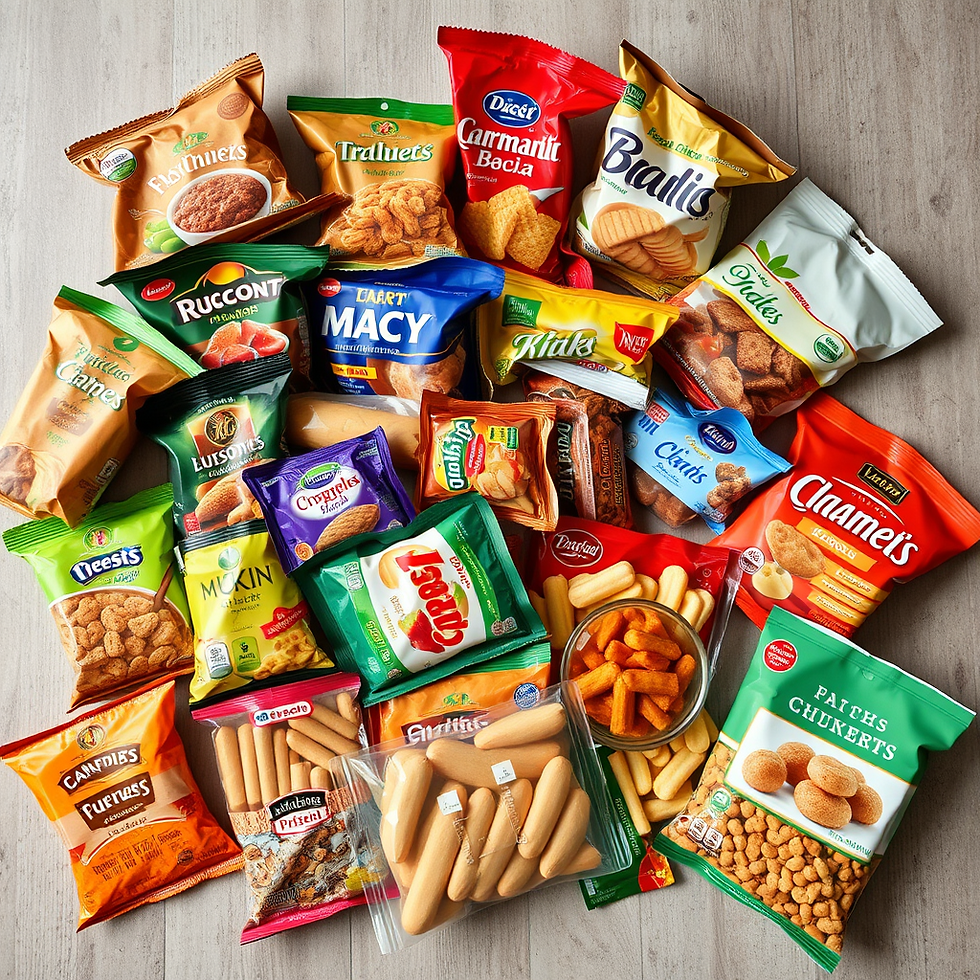
How to Read Food Labels (and What to Ignore)
- infohaanna
- 2 days ago
- 4 min read
Introduction
Ever stood in the supermarket aisle staring at the back of a box, trying to make sense of the numbers and words crammed into that tiny label? You’re not alone, reader. Food labels are supposed to help us make healthier choices, but between calories, percentages, and flashy health claims, it can feel like reading another language. The good news: once you know what to look for (and what not to stress about), reading labels becomes quick and simple.
Here’s your guide to cutting through the noise and focusing on what really matters.

Start With the Serving Size
The most overlooked part of a food label is right at the top: the serving size. Every single number on the label, from calories to fat to sugar — is based on that serving size.
Here’s the catch... companies often make serving sizes unrealistically small. A bag of chips might say 150 calories, but the serving size is only 10 chips. If you eat the whole bag (which I know you do), you’ve just had 450 calories, not 150.
Rule of thumb: always check serving size first then double or triple the numbers if you’re eating more than one serving.
Calories Are Useful, But They're Not Everything
Calories tell you how much energy the food gives your body. They matter, especially if you’re watching your weight, but they don’t tell the whole story.
200 calories of soda and 200 calories of yogurt affect your body in completely different ways. That’s why it’s more important to check what those calories are made of. Are they coming from protein, fiber, and healthy fats? Or mostly from added sugar and refined carbs?
Tip: use calories as a guide, not a rule. Focus more on the nutrient breakdown.

Nutrients Worth Paying Attention To
Not all nutrients on the label deserve equal attention. These four are worth your time:
Protein – Keeps you fuller for longer, supports muscles, and balances blood sugar. Look for foods with a decent amount of protein, especially in snacks and meals.
Fiber – Essential for digestion, gut health, and energy levels. Low fiber often means a food is highly processed. Aim for 3g or more per serving when possible.
Added Sugars – A sneaky culprit in cereals, sauces, yogurts, and drinks. The World Health Organization suggests keeping added sugar under 25g per day. If the label says 15g of added sugar in one serving, that’s already over half your daily limit.
Sodium (Salt) – High sodium is linked to high blood pressure. Packaged foods like soups, chips, and frozen meals are notorious for this. If the number is above 20% of your daily value per serving, it’s on the high side.
The Ingredients List: Your Best Friend
The nutrition panel gives numbers, but the ingredients list tells the truth. By law, ingredients are listed from most to least. That means the first three ingredients make up the bulk of the food.
Things to look for:
If sugar, syrup, or anything ending in “-ose” shows up early, the product is mostly sugar. If the list is short and filled with words you recognize (like oats, nuts, salt), it’s usually a better choice. If the list is long and full of unpronounceable additives, it’s probably highly processed.
Fun fact: companies often use different types of sugar (like corn syrup, cane sugar, fructose) to avoid “sugar” being the first ingredient. Always scan the whole list.

What You Can Ignore (Mostly)
Not everything on the label deserves your energy. Some things are more marketing than nutrition:
Buzzwords on the front such as “Natural,” “light,” “immune-boosting,” “fat-free.” These sound good but don’t guarantee health. Always flip to the back for facts.
Percent Daily Value (%DV) – These numbers can be confusing and are based on a 2,000-calorie diet, which doesn’t fit everyone. Use them only as a rough guide: 5% is low, 20% is high.
Vitamins and Minerals – Unless you’re checking for something specific (like iron or vitamin D), you don’t need to obsess. If you eat a varied diet, you’ll usually get what you need.
Quick Label-Reading Hack
If you’re in a rush at the store, here’s the shortcut method:
Step 1: Check serving size.
Step 2: Glance at calories (don’t obsess).
Step 3: Look at protein, fiber, added sugar, and sodium.
Step 4: Read the first three ingredients.
Step 5: Ignore the front-of-package marketing.
Do this a few times and it becomes second nature.

Why This Matters
Learning how to read food labels isn’t about obsessing over every bite. It’s about awareness and choice. When you know what’s actually in your food, you get to decide if it fits your goals — whether that’s eating healthier, managing weight, or just feeling better.
Food companies want you to focus on the flashy promises. But when you start looking past the marketing and straight at the facts, you take back control of your plate.
Conclusion
Food labels don’t have to be a puzzle. Start with the serving size, check calories without stressing, focus on the big four (protein, fiber, sugar, sodium), and glance at the first three ingredients. The rest? You can usually ignore it.
Next time you’re in the supermarket, dearest reader, try it out. Flip the box, scan with purpose, and walk away knowing exactly what you’re putting into your body.
Healthy eating isn’t about perfection. It’s about making informed choices, one label at a time.





Comments